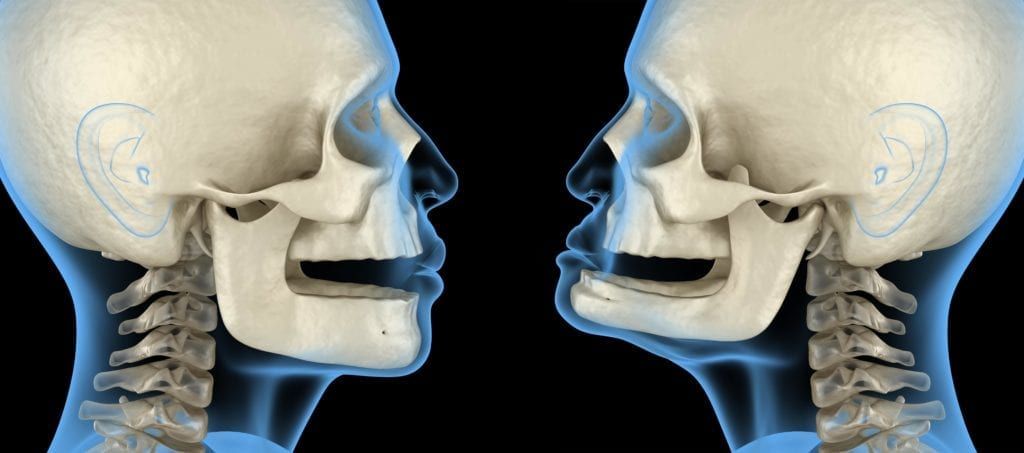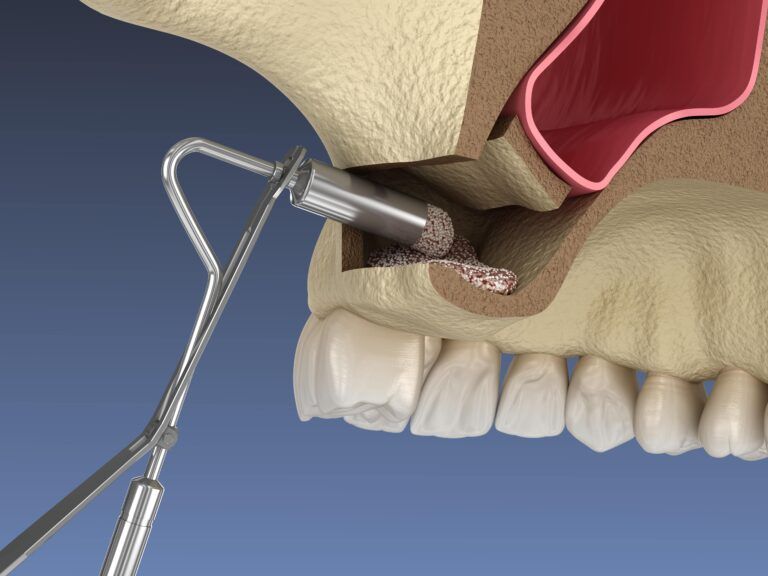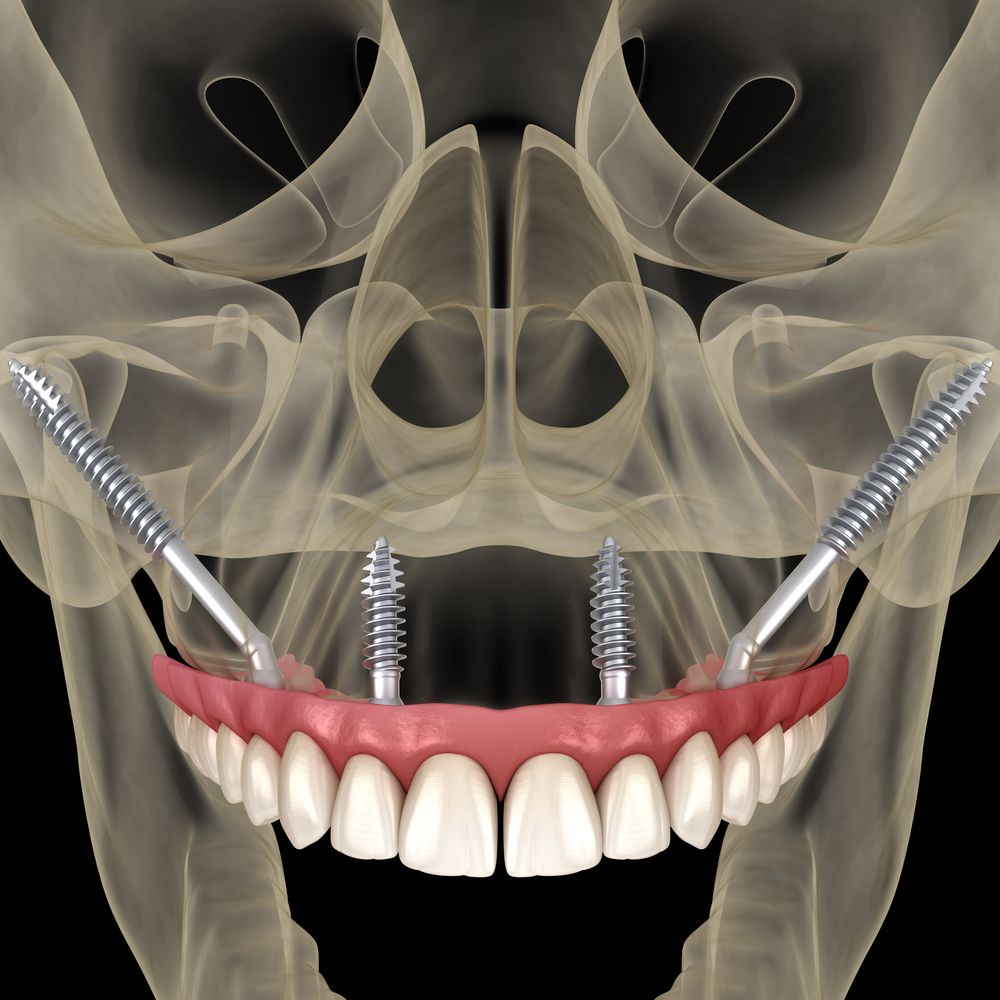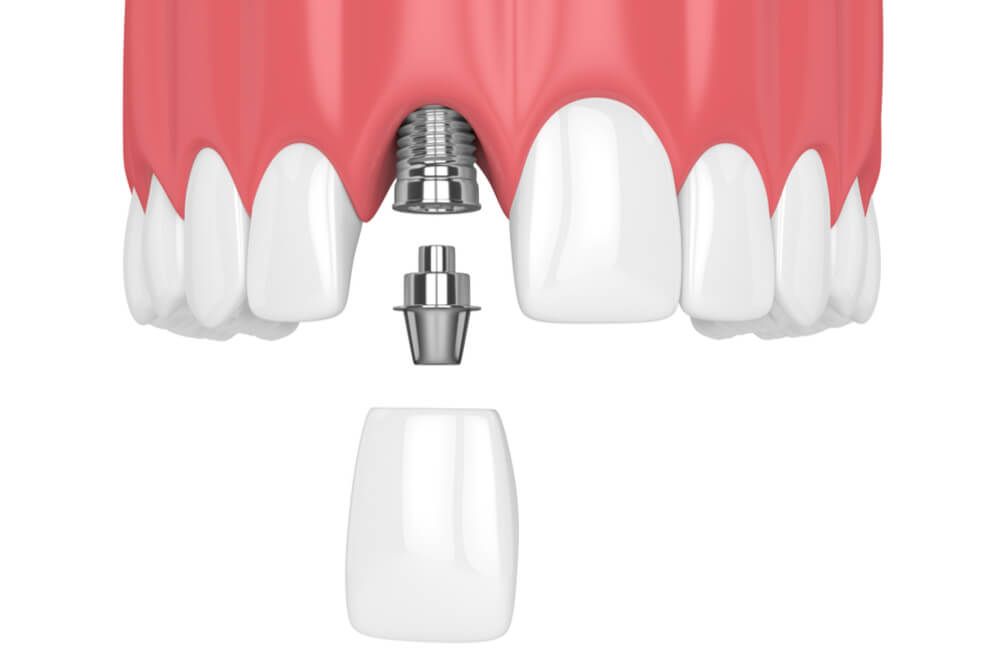Are you dealing with bone loss from missing teeth? If so, you may have heard about sinus lifts and zygomatic implants as possible solutions for restoring the area. But what exactly are these procedures, and which one is better for addressing bone loss? In this blog post, we’ll explore the difference between a sinus lift and a zygomatic implant—as well as what factors to consider when deciding which treatment is best for you.
Bone Loss Basics
Before getting into how sinus lifts and zygomatic implants address bone loss, we must first understand what bone loss is and how it affects the jaw, as well as the placement of dental implants. Bone loss in the upper jaw (maxilla) can occur for a variety of reasons, including:

- Tooth loss: When a tooth is lost or extracted, the surrounding bone tissue begins to resorb or shrink away over time. This process can lead to a decrease in bone density in the jaw.
- Gum disease: Periodontal disease, or gum disease, is a bacterial infection that can cause inflammation and damage to the gum tissue and bone supporting the teeth. Over time, this can lead to bone loss in the jaw.
- Trauma: Injury or trauma to the face or jaw can cause damage to the bone tissue, which can lead to bone loss.
When there is insufficient bone density in the upper jaw, dental implant placement can be more difficult or even impossible. Dental implants require a strong, stable foundation of bone tissue to support them, and without this support, the implant may not integrate properly with the jawbone, or may fail altogether.
What is a Sinus Lift and How Does it Help with Bone Loss?
A sinus lift is a surgical procedure performed in dentistry to add bone mass to the upper jaw (maxilla) in the area of the molars and premolars. This is done in preparation for dental implants, which require sufficient bone mass to anchor them securely in place.

The procedure involves creating a small incision in the gum tissue near the area where the implant will be placed, and then lifting the sinus membrane, which is located above the jawbone, to make room for the bone graft material. The graft material, usually taken from the patient’s own body or a synthetic source, is then placed in the space created by the sinus lift. Over time, the graft material fuses with the surrounding bone tissue, creating a stronger and more stable base for the dental implant.
Indications:
A sinus lift is a dental procedure that is typically recommended for patients with moderate bone loss in the upper jaw, where there is still enough bone to support dental implants, but not enough to provide a stable base. It is commonly used in cases where the bone has been lost due to tooth loss, periodontal disease, or other factors that affect bone density.
Advantages:
The main advantage of a sinus lift is that it allows for the placement of dental implants in the upper jaw, where bone loss may have made it impossible to place them otherwise. The procedure can help restore a patient’s ability to chew and speak properly, and can also improve the appearance of their smile. In addition, sinus lifts are typically a safe and effective procedure, with a high success rate and low risk of complications.
Disadvantages:
One disadvantage of a sinus lift is that it is a surgical procedure that requires a longer healing period than traditional dental implant placement. Patients may need to wait several months before the dental implants can be placed, as the grafted bone needs time to integrate and fuse with the existing bone. In addition, there is a risk of sinus complications, infection, and graft failure associated with the procedure.
Overall, a sinus lift can be an effective option for patients with moderate bone loss in the upper jaw who wish to have dental implants placed. However, it is important for patients to discuss all of their options with their dental professional and carefully consider the potential risks and benefits before undergoing any dental implant procedure.
What is a Zygomatic Implant and how does it address bone loss in the jawbone?
Zygomatic implants are a type of dental implant that are longer than traditional dental implants and are anchored in the zygomatic bone, which is the cheekbone. They are used to provide stability and support for dental restorations in patients with significant bone loss in the upper jaw (maxilla), where traditional dental implants may not be feasible due to insufficient bone density.

The placement of these longer length implants requires less dense and healthy bone from the patient than traditional implants, allowing for those with severe jawbone loss to still receive dental care and services when other options become unavailable. When compared to sinus lifting as a method for restoring jawbone density, zygomatic implants provide an exceptionally secure platform for attaching new replacements with minimal risk of failure due to low density bone conditions.
Indications:
Zygomatic implants are typically used in cases where there is severe bone loss in the upper jaw, such as in patients with a history of periodontal disease or tooth loss. They may also be used in cases where a patient has undergone multiple failed dental implant attempts or has insufficient bone for a sinus lift procedure.
Advantages:
The main advantage of zygomatic implants is that they provide a viable option for dental implant placement in patients with severe bone loss in the upper jaw, where traditional dental implants or bone grafting procedures may not be feasible. They also have a high success rate and can often be placed in a single surgical session.
Disadvantages:
Zygomatic implants are a more complex and specialized procedure than traditional dental implant placement, and require a highly skilled and experienced dental surgeon. They also carry a higher risk of complications, such as infection, nerve damage, or sinus problems. Additionally, they can be more expensive than traditional dental implant procedures.
Overall, zygomatic implants can be an effective solution for patients with severe bone loss in the upper jaw who may not be candidates for traditional dental implant placement or bone grafting procedures. However, it is important for patients to discuss all of their options with their dental professional and carefully consider the potential risks and benefits before undergoing any dental implant procedure.
Factors to Consider When Choosing which Procedure to Use for Bone Loss
When deciding between a sinus lift and zygomatic implants, several factors should be considered. These include:
- Degree of bone loss: The degree of bone loss in the upper jaw is an essential factor to consider when choosing between a sinus lift and zygomatic implants. A sinus lift is typically recommended for patients with moderate bone loss, while zygomatic implants are usually recommended for patients with severe bone loss.
- Patient’s general health: The patient’s general health is another important factor to consider. Patients with certain medical conditions or who are taking certain medications may not be good candidates for surgery, such as zygomatic implants. Therefore, the patient’s general health should be carefully evaluated before deciding on the best course of action.
- Patient’s preference: The patient’s preference and their goals for dental restoration should also be taken into consideration. Some patients may prefer a less invasive procedure, such as a sinus lift, while others may prioritize quicker results or more stable implants, which may be better achieved with zygomatic implants.
- Cost: The cost of the procedure is another critical factor to consider. Zygomatic implants are typically more expensive than a sinus lift or traditional dental implant placement due to the specialized equipment and expertise required.
- Surgical expertise: The experience and expertise of the dental surgeon performing the procedure is another crucial factor. Zygomatic implants require specialized training and experience, and the success rate is highly dependent on the skill of the dental surgeon.
In summary, several factors should be taken into consideration when deciding between a sinus lift and zygomatic implants, including the degree of bone loss, the patient’s general health, their preference, the cost, and the expertise of the dental surgeon. Patients should discuss all their options with their dental professional to make an informed decision that best fits their unique situation.
In Conclusion
In sum, Sinus Lift and Zygomatic Implants serve unique purposes to address the issue of bone loss in the jawbone. While they both offer advantages to replace missing teeth and restore functionality, there are significant factors to consider before choosing which procedure will best meet your needs. Therefore, you should discuss all their options with a dental professional to make an informed decision that best fits your unique situation. If you are considering either a Sinus Lift or a Zygomatic Implant for bone loss treatment, please reach out to Dr. Atcha at New Teeth Chicago Dental Implants for expert advice and help in answering any further questions you may have about these procedures. Schedule your consultation today!

